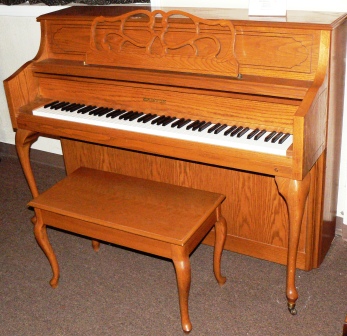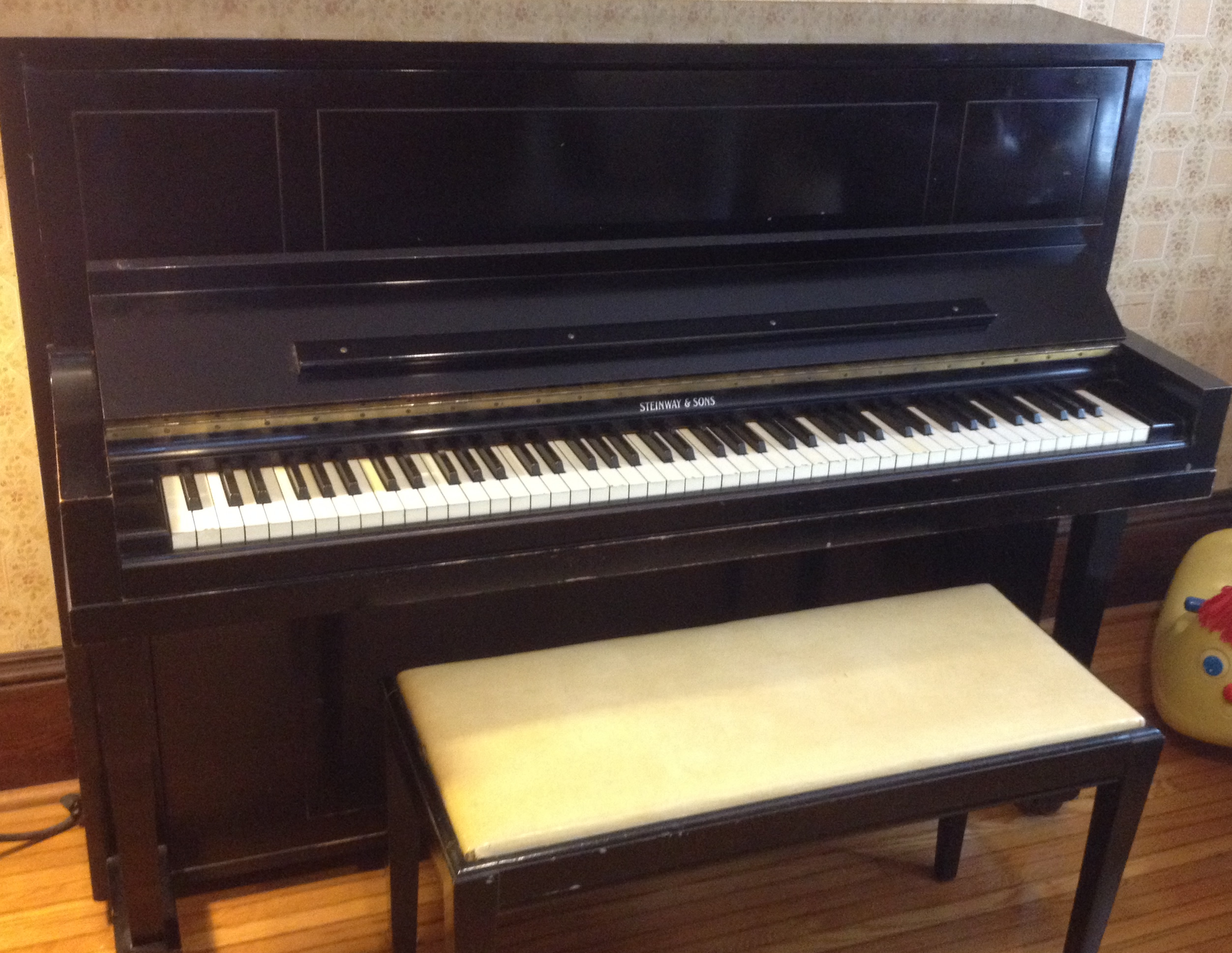

- #EBONY WURLITZER SPINET PIANO MANUALS#
- #EBONY WURLITZER SPINET PIANO PORTABLE#
- #EBONY WURLITZER SPINET PIANO SERIES#

Those usually seen resemble a beige or light green Model 200 mounted on a matching pedestal containing a loudspeaker, headphone niche and sustain pedal. All students listened to each of their instruments through headphones. The teacher had a headphone and microphone to be able to listen into each student individually and talk to them without others hearing them. One important role for the Wurlitzer piano was as a student instrument in school and college music labs, and non-portable console versions were made for this purpose. The last version to be introduced was the 200B in 1978 this was visually identical to the 200A but was designed to be powered by a pair of medium-tension (85v) rechargeable batteries it had no internal speakers. The white Wurlitzer sometimes seen being used by bands such as The Beach Boys, The Carpenters and Supertramp was a custom painted finish not made by the manufacturer. The 200 was available in black, dark "Forest Green", red or beige.

This model was updated as the 200A a few years later and continued in production into the early 1980s. The next model, the 145 was replaced in 1968 by the plastic-bodied 200, a much lighter instrument (56 lbs, without the legs or pedal) with two loudspeakers facing the player. Models produced until the early 1960s used vacuum tube circuitry the 140B was the first solid-state model.
#EBONY WURLITZER SPINET PIANO PORTABLE#
Apart from the very first models, the portable Wurlitzer pianos featured a tremolo effect with fixed rate but adjustable depth.
#EBONY WURLITZER SPINET PIANO SERIES#
The earliest versions were the "100" series these had a case made from painted fibreboard or wood and were fitted with a single loudspeaker mounted in the rear of the case. The early models sustain pedals actually attached through the side of the instrument, with the pedal eventually being connected directly under the unit in the late 50s.

Most Wurlitzer electric pianos are portable models with removable legs and the sustain pedal attached via a Bowden cable console, "grand" and "spinet" models were also produced with a permanently attached pedal. The model 106 was a later model, not an early model.
#EBONY WURLITZER SPINET PIANO MANUALS#
Pictures of a model 100 do exist, and the Wurlitzer EP Service manuals do state that the Wurlitzer was introduced in 1954, not 1955. There is evidence of a piano designated as the model 100, but whether or not it was produced or only a prototype is up for debate. The instrument entered production in 1955 as the EP-110, followed by the 111 and 112 of the same year, and continued to be produced in various forms until about 1982 when production of the EP-200A ceased. Inventor Benjamin Miessner had designed an amplified conventional upright piano in the 1930s, and Wurlitzer used his electrostatic pickup design, but replaced the strings with struck steel reeds. A mechanical sustain pedal similar to that of a conventional piano is fitted. Tone production in all models comprises a single steel reed for each key, activated by a miniature version of a conventional grand piano action and forming part of an electrostatic pickup system using a DC voltage of 170v. The Wurlitzer piano is usually a 64-note instrument whose keyboard range is from A an octave above the lowest note of a standard 88-note piano to the C an octave below the top note of an 88-note piano. See however electronic piano, the generally accepted term for a completely different type of keyboard instrument. Interestingly, the Wurlitzer company itself never called the instrument an "electric piano", inventing instead the phrase "Electronic Piano" and using this as a trademark throughout the production of the instrument. The Wurlitzer electric piano was one of a series of electromechanical stringless pianos manufactured and marketed by the Rudolph Wurlitzer Company, Corinth, Mississippi, U.S.


 0 kommentar(er)
0 kommentar(er)
